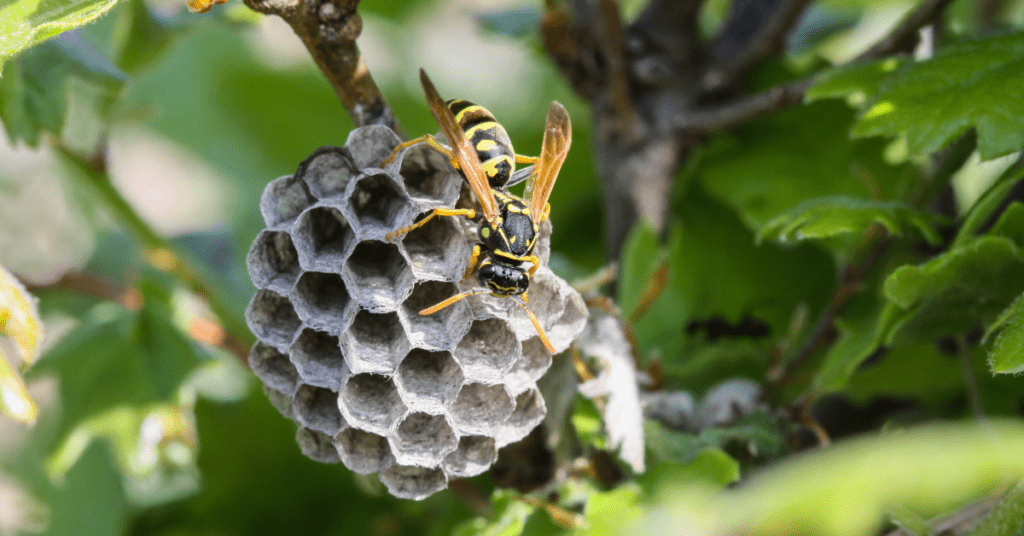Stinging Insects: Identification, Dangers, and Effective Removal Practices for Homeowners


Stinging insects such as bees, wasps, hornets, and yellow jackets can pose significant challenges and dangers around residential areas. While some are beneficial pollinators, others are aggressive protectors of their nests, capable of causing painful stings and allergic reactions. This article aims to help homeowners identify common stinging insects, understand the risks associated with them, and implement effective removal practices to ensure safety and peace at home.
Identification of Common Stinging Insects
Bees
Honeybees are small, hairy, and have a golden-yellow color with dark brown bands. Unlike other stinging insects, honeybees can sting only once before they die. Carpenter bees are larger and have a shiny, black abdomen, and they are known to bore into wood to lay eggs. When identifying stinging insects, remember that carpenter bees can cause significant damage to wooden structures.
Wasps
Wasps vary in colour from black to metallic greens and blues and have a slender body with a narrow waist. Common varieties include yellow jackets, which have a bright yellow and black pattern, and paper wasps, which create nests resembling an upside-down umbrella.
Hornets
Hornets are larger than most wasps, with some species displaying white or yellow markings on their head or abdomen. The bald-faced hornet, for instance, is easily recognizable by its white facial markings. Learning facts about the Asian giant hornet can help you better understand and identify these particularly dangerous stinging insects.
Yellow Jackets
Yellow jackets are a type of wasp with a distinctive yellow and black striped abdomen. They are especially aggressive and known to sting repeatedly, making them particularly hazardous.
Dangers Associated with Stinging Insects

Stinging insects can pose several risks, including:
- Allergic Reactions: Stings can cause severe allergic reactions such as anaphylaxis, which requires immediate medical attention.
- Multiple Stings: Some species, like yellow jackets, can sting multiple times, increasing the potential for significant pain and harm.
- Aggression Near Nests: Many stinging insects are most aggressive when defending their nests. Accidentally disturbing a nest can lead to multiple stings from multiple insects.
Effective Removal Practices
Preventive Measures
- Seal Entry Points: Close gaps in siding, eaves, and roofs to prevent insects from entering and establishing nests inside structures.
- Remove Attractants: Keep outdoor eating areas clean, cover sugar-rich beverages, and secure garbage bins to avoid attracting insects.
- Maintain the Yard: Regularly inspect and manage shrubbery and tree branches, which can be common nesting sites. Knowing how to keep your backyard party bug-free is essential for a pleasant outdoor experience.
Safe Removal Techniques
- Hire Professionals: For large or inaccessible nests, or if allergic reactions are a concern, professional pest control from Pestcheck is the safest option.
- Use Protective Clothing & Approach at Night: When attempting to remove a nest, wear thick clothing, gloves, and a face mask to prevent stings. Insects are less active at night, making it safer to approach and remove nests.


After Removal Care
- Monitor the Area: After removal of a nest, keep an eye on the area for signs of new activity, as insects may attempt to rebuild.
- Educate the Household: Ensure all family members know how to react to stinging insects and understand the importance of avoiding nests.
Conclusion
Identifying and safely removing stinging insects are crucial steps in managing the risks associated with these pests. Effective pest control can be critical if pests are stopping you from selling your home. By taking preventive measures, using safe removal techniques, and understanding when to call in professionals like PestCheck, homeowners can protect their families from the dangers of stinging insects and enjoy their outdoor spaces without fear.


Protecting your home from stinging insects and other pests is essential for maintaining a safe and comfortable living environment. If you’re dealing with pest issues in your area, don’t hesitate to reach out for professional assistance. Our expert team at Pestcheck offers comprehensive pest control services across multiple locations. Whether you need West Vancouver Pest Control, North Vancouver Pest Control, Vancouver Pest Control, Burnaby & New West Pest Control, Coquitlam & Tri-Cities Pest Control, or Richmond Pest Control, we are here to help. Contact our team at PestCheck to ensure your home remains pest-free and your family stays safe.
